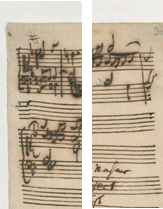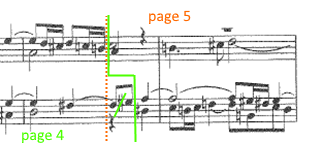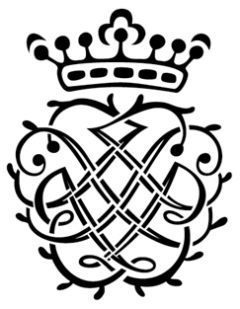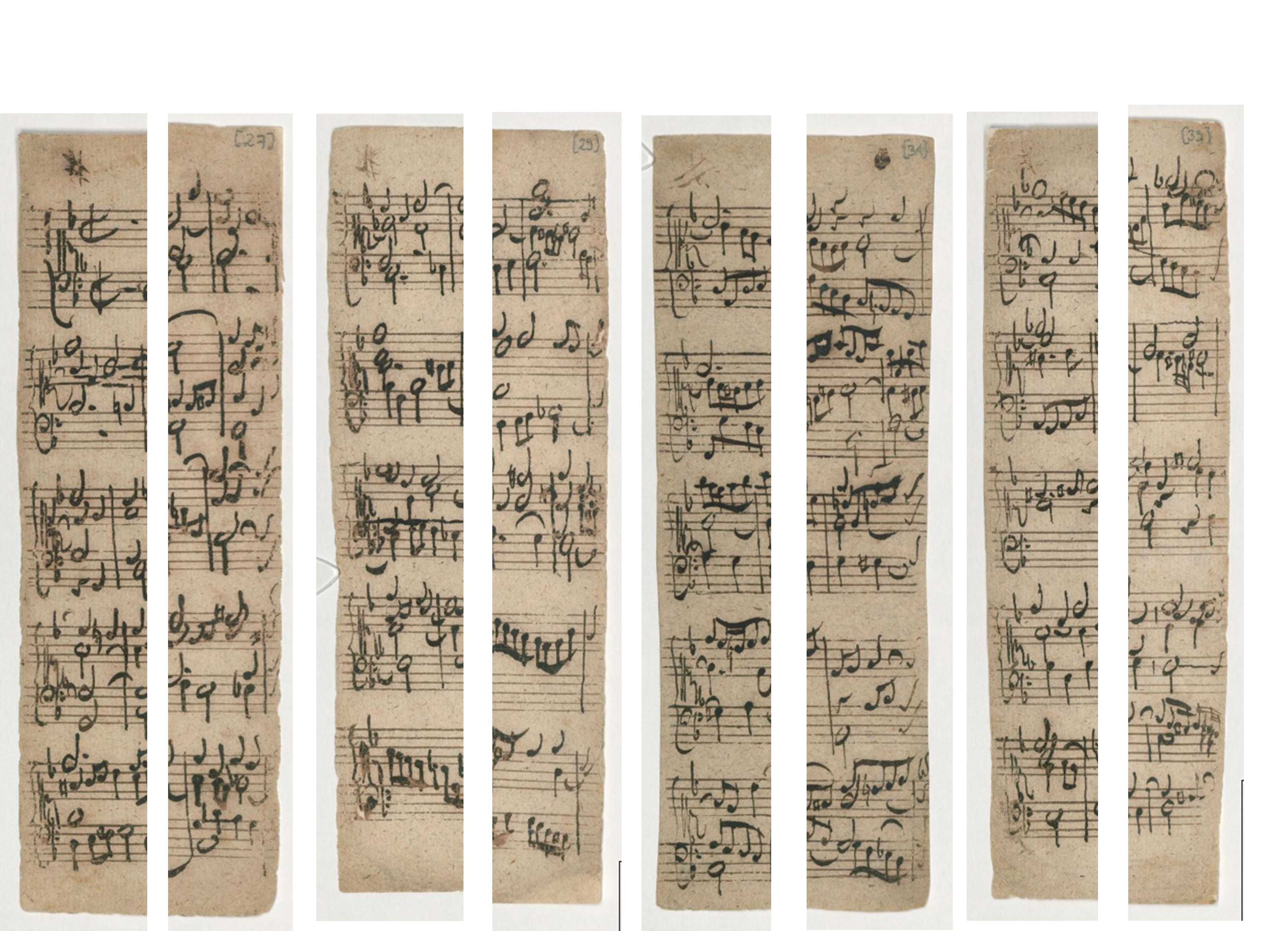As can been seen in the autograph, J.S. Bach uses an transition notation passing from one staff to another, on the same page and among pages. Also sharps and flats are noted.
The beginning and end of the staffs of page 1 to 4 are illustrated in figure 5. The beginning and end of the staffs of page 5 is illustrated in figure 6. Figure 7 illustrates the transition between page 4 and 5 as it is included in the first revised edition of Die Kunst der Fuge. Figure 8 illustrated the music notes involved in the transition notation, the fis-g at page 4 and the fis-gis at page 5.



Aberrant of other transitions, the transition between page 4 and page 5 doesn’t fit. The transition notes are the fis-g in the tenor on page 4 and the fis-gis in the tenor on page 5. The notes aren’t the same. This is an exception looking to the other transitions. The break is at the middle of the bar and the notation is consistent accept of the sharp of the g. One can wonder if Bach used the sharps and flats consistent in the transition notations. At page 1 to 4 the transitions are consistent also with respect of the sharps. Examples are the sharp within bar 56-57 at the fourth staff at page 1 and bar 185 at the first staff on page 4 with a little sharp. In case of the end of page 4 naturals in the soprano and the sharp in the tenor at de fis is noted, at the g there is enough space to note a sharp but this isn’t the case. At page 5 there is a sharp at the g.
Another remarkable fact is the relation between the last bar of page 4 (bar 227-228) and bar 33-34 where the same notes are applied with the g, see figure 9 and 10.



